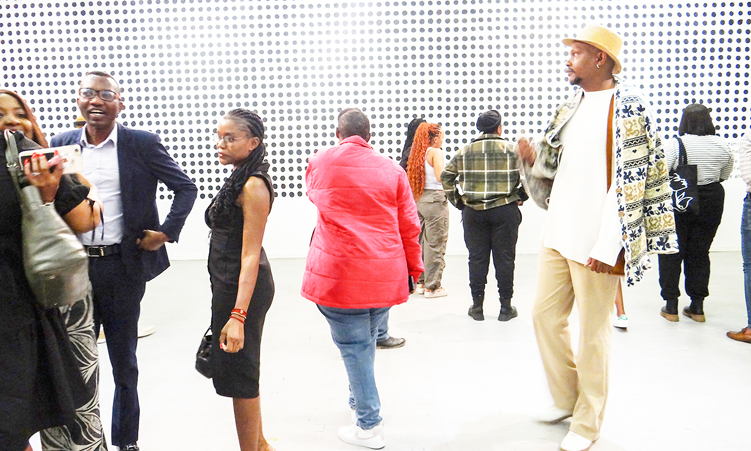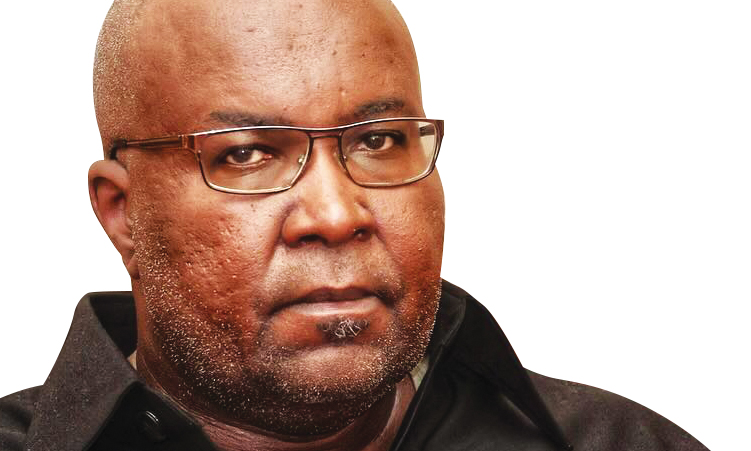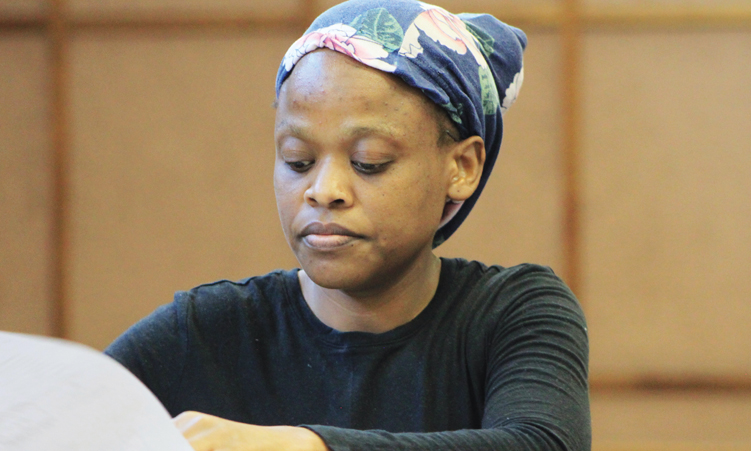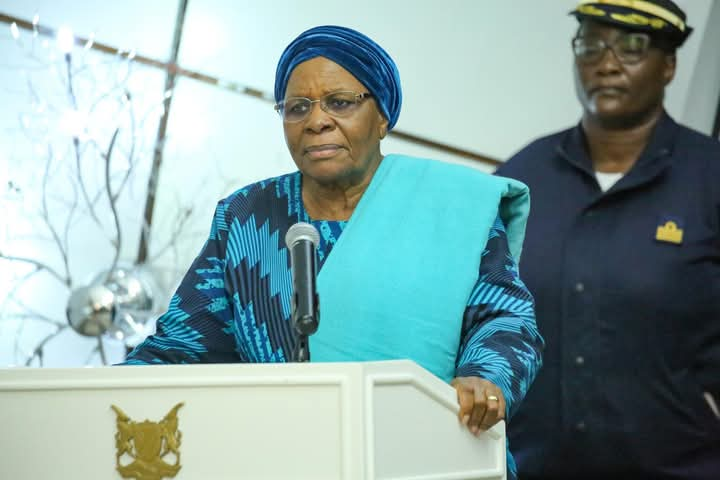Below the bright lights of the National Art Gallery of Namibia (NAGN) there is a calabash once used for defensive spells.
A keeper of culture from the Kavango East calls it by its Rukwangali name and elaborates on its usage.
“Kandjungo is mainly used by traditional healers as a storage box for a concoction infused with luck and charm.”
The small brown gourd bound with a piece of worn leather is one of 23 cultural belongings returned to Namibia from the Ethnological Museum of Berlin in May 2022.
Many more belongings are currently housed below glass in the NAGN’s stark exhibition rooms.
These returned artefacts have in turn inspired art by six featured artists working alongside seven community researchers to rediscover and reignite the cultural significance and indigenous narratives intrinsic to what was taken, looted or lost during Namibia’s German colonial era.
The items are believed to have been acquired between 1860 and 1890, and were part of almost 1 400 cultural belongings in Berlin’s Ethnological Museum’s collection identified as originating in Namibia.

Collectively, the exhibition of the returned belongings, the reflecting art and the cultural research is titled the ‘Artistic Research and Communal Knowledge (ARCK) Exhibition’ under the theme ‘Reconnecting with Returned Cultural Belongings’.
Since the cultural belongings’ return and installation at the National Museum of Namibia, the process of reconnection has been manifold.
For the purposes of the NAGN exhibition, a team of artists and researchers came together to share their insights into the 23 cultural belongings at Okombahe, collectively raising their concerns about the role and representation of local communities in the context of post-colonial restitution and repatriation.
Beneath the shade of a tree cooling a riverbed at Omaruru, the group gathered to discuss the belongings’ traditional uses, their makers and their wielders.
Later, the group embarked on a number of smaller trips around the country to seek the knowledge keepers whose wisdom is documented in a series of statements beside the corresponding returns.
To walk through the exhibition of leather cloaks, tortoiseshell powder boxes, fire-resistant aprons and a pair of tasseled leather knee bands of which the cultural significance is confirmed through archival photographs of their wearers is to traverse a history that is largely unknown and which was systematically suppressed by the ruling colonial forces of the day.
“There are only fewer than a handful of Khoekhoegowab-speaking elders who possess the knowledge of ≠Nukhoen skin attire beyond tanning.
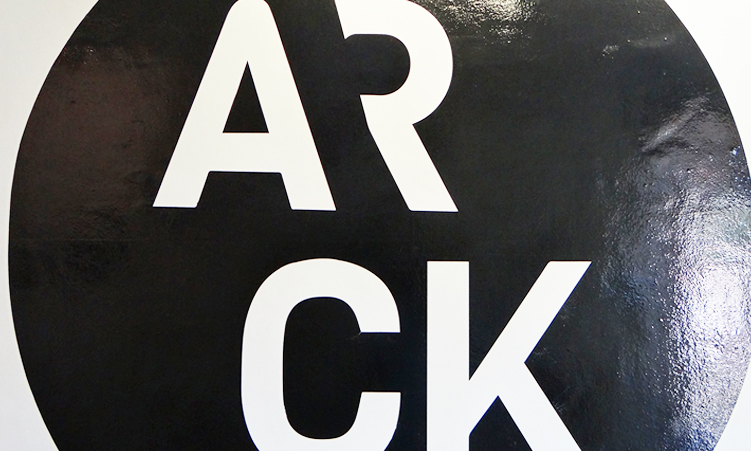
“The eldest person in this room is 82 years old and his memory is fading,” says knowledge keeper Johannes Gurirab in a printed statement next to a !gaes (‘apron’ in Khoekhoegowab) usually worn by women to guard against the sparks of the cooking fire.
“The rest of us were born at a time when we were already wearing European attire. The lack of documentation and the continuation of it is what will continue to wipe out our heritage.”
This exhibition forms part of a broader initiative titled ‘Confronting Colonial Pasts; Envisioning Creative Futures’.
These futures are imagined, created and archived in a collection of accompanying artworks which look back and forward as they provide context for the cultural belongings.
Responding to a returned handcrafted doll with a larger-than-life replica, as well as a series of textiles, visual artist Tuaovisiua Katuuo reconnects with her own Ovaherero girlhood during which a similar ombopi (doll) was handcrafted for her by her mother.
Katuuo also highlights the doll’s traditional use as a charm to ensure fertility in women.
Reconnecting through poetry by Prince Kamaazengi Marenga, clothing by Fallone Tambwe, and an audio-visual presentation by Vitjitua Ndjiharine, ARCK fuses historical research, culture and art in an illuminating, multifaceted and affecting display worthy of such a momentous return.
Or of an indefinite loan, which is what the return initially is for bureaucratic reasons – a situation which has been passionately debated.
Providing insight into the era during which some of the 1 400 Namibian cultural belongings housed in Berlin’s Ethnological Museum were obtained, poet and writer Keith Vries presents ‘The Genocide Times’, a scathing and frankly horrifying historical broadsheet that speaks of the homicidal brutality, complicity and sheer murder perpetrated by German colonialists.
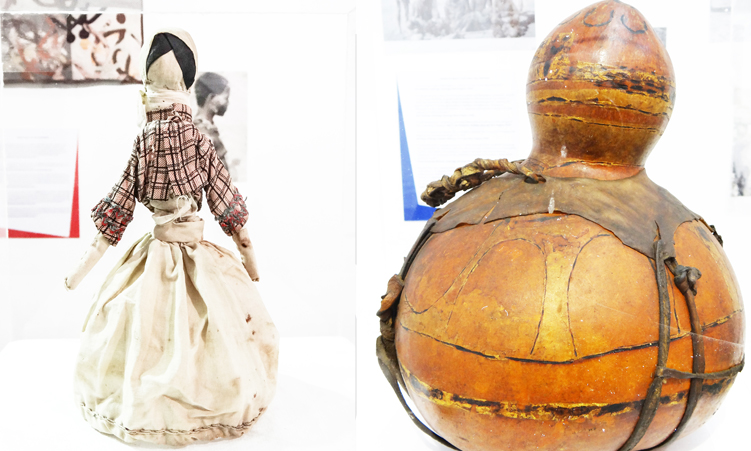
Offering some emotional refuge amid Vries’ distressing textual, archival and symbolic testimonies of Germany’s brutal colonialism and genocide in Namibia contrasted with the defiance of the Witboois, Nama heroes of the time, Nesindano Namises presents ‘Kalab_sh House’, an oasis of landscapes, poetry, community, remembrance, restoration and song.
Drawing significant inspiration from a returned calabash, Namises expounds on Khoekhoegowab’s two-dimensional word kuru, which means fixing and creating.
All told, one can extrapolate the concept of kuru to encompass ARCK as a whole.
In its return of the cultural belongings and the project’s vital unearthing and extension of their meaning, the exhibition, like Namises’ ‘Abas Oms’, aids in “repairing history and creating new narratives”.
“Creating as we mend,” Namises says.
ARCK is co-funded by the Heinrich Boll Foundation and is a sub-project of the larger ‘Confronting Colonial Pasts, Envisioning, Creative Futures’ project, which is funded by the Gerda Henkel Foundation and administered by the Museums Association of Namibia. ARCK’s community researchers are Munu Godfrey Kuyonisa, Immanuel Xamro !Keib, Ngombe Ngarerue, Iyaloo Moshana, Tamace Rabbie Naici, Riana Vries and Bonifasius Mushongo. Willem Vrey and Joe Vision Production documented the process through photography and film. The exhibition will be on show until 18 May. Follow ARCK on Instagram for more information.
– martha@namibian.com.na; Martha Mukaiwa on Twitter and Inst gram; marthamukaiwa.com
Stay informed with The Namibian – your source for credible journalism. Get in-depth reporting and opinions for
only N$85 a month. Invest in journalism, invest in democracy –
Subscribe Now!




